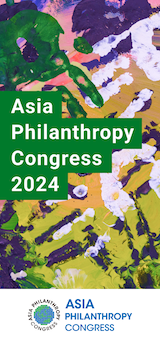In North America, social ideals encompassing the ‘common good’ have existed from the earliest times of human habitation. First Nations tribes, groups of European settlers landing from England, France and Spain, enslaved Africans arriving under coercion, and continual waves of immigrants over the years followed practices that respected a ‘commons.’ These practices contributed to a set of customs to maintain the ‘common good,’ at least with respect to their own communities.
Whatever their provenance, these concepts universally rested on the perception that humans are interdependent, rely on nature, and require cooperation with both to assure their survival and success. In the absence of centralized government, individual North American tribes and a steady stream of kinship groups among European settlers, developed their own serviceable folkways and customs for maintaining the ‘common good.’ The practices were simultaneously diverse – distinct from each other with respect to time and place – yet similar with respect to application and intent. The ‘commons’ and the universal view of ‘good’—in the form of livelihood, health and ease – was honored within each group, and sometimes beyond as treaties and compacts
The concept of the ‘common good’ that today guides diverse missions in the continent’s nonprofit sector (including philanthropy) and the pursuit of the public good in government originates from this pluralistic, divergent, fluctuating stew of practices.
The history of land use by these peoples is a rich source of insight into the roots of the ‘commons’ and the ‘common good’ in North America today. The Canadian scholar Allan Greer notes the universality of three aspects of land use in his description of these: individual ownership (homes and farms); an ‘inner commons’ (common areas in a village, for example, for livestock and sometimes farmland) and the ‘outer commons,’ (the areas of land outside the village and related farmlands). All were found in Indian communities as well as traditional European villages.
‘A widely-shared, cohesive understanding of the importance of the commons has been long in retreat. North Americans have evolved away from an early tradition of sharing to today’s environment of continually contested values.’
The ‘outer commons,’ was the wild land which was needed but unassigned for specific ownership, where villagers might hunt, cut wood, gather herbs, let domesticated animals graze and forage, collect natural foods such as nuts, mushrooms, and similar. The latter was at first used cooperatively, with natives and settlers sharing this uncultivated, unenclosed land and respecting, in most cases, the needs of neighbors for access to the resources it provided.
While seemingly informal, the understandings surrounding use of the outer commons were as valid in that time and place as were those pertaining to the villages and agricultural lands of the ‘inner commons.’ For years, the rules, informal and formal, regarding the commons were universal.
There was a hitch, however. This widely used ‘outer commons’ was the scene of the strongest conflicts among parties. Among natives, hunting or fishing rights, for example, might be contested. As Europeans arrived, those not respecting the outer commons might let their animals roam this land at will, undermining neighbors’ needs:
‘…The effects on Indian subsistence could range from the merely annoying to the utterly devastating. Cattle sometimes ate standing crops; hogs stole stored food or dug up clam beds…trampling hooves and excessive grazing could bring about environmental changes that affected deer…populations, spreading weeds and contributing to soil erosion…’ [1]
Unlike their forbears, who maintained the stability of the ‘outer commons’ of Europe, most North American settlers from England, France, and Spain were driven into the ‘outer commons’ by their ‘relentlessly expansionist dynamic.’ Here was the main scene of conflict as the Europeans expanded, and the concept— that everyone is entitled to a commonly held, non-proprietary resource base for the necessities of life – remains the scene of conflict today.
One result is that a widely-shared, cohesive understanding of the importance of the commons has been long in retreat. North Americans have evolved away from an early tradition of sharing to today’s environment of continually contested values.
‘To a large degree, the outer commons represents the unspoken agreement on values and behavior that all civilization requires.’
The ‘outer commons’ is analogous to the undefined yet vital human and natural systems that comprise globally-shared basics required for maintenance of the ‘common good.’ Today’s ‘outer commons’ now encompasses economic access, civil rights, education, and access to health care, to name some that embrace and reach beyond universal, eternal basics such as food, water, air and shelter.
These conditions are the complex environment surrounding philanthropy’s and government’s efforts to define—let alone uphold – the ‘common good.’ Both negotiate a complex pastiche of good intentions, conflicting values and the fracturing and reorganizing of past coalitions and communities. Even the past civility and pathways to consensus that marked differing points of view are obscured at best.
One aspect that is highly relevant to philanthropy is the privatization of ‘public goods,’ i.e., resources and services once publicly owned (such as water, the use of public lands, the air waves, hospitals and schools). This is coupled with commercial models that accelerate fast scaling and privilege extensive private wealth building.
While public/private projects have long been a feature of the U.S. economy, these have grown in size, number and scope, upending the balance of public and private interests with highly extractive business models. The U.S.’s failure to move ahead with climate change targets and the abandonment of unwritten rules that guided political consensus and behavior in past years are additional examples of a violation of our ‘outer commons.’
It is fair to say that privatization of the survival-relevant resources in North America is driven by the same ‘relentlessly expansionist dynamic’ that characterized appropriation of the ‘outer commons’ in 17th and 18th century North America. To a large degree, the outer commons represents the unspoken agreement on values and behavior that all civilization requires. In North America, and particularly in the United States, it is being upended yet again, and the long-time roles and pathways to success that represented a certain equilibrium (such as collaboration with government) are now unreliable and even politically contested.
Thus, North American philanthropy is up against it when it comes to the care and feeding of the ‘common good’. It operates in an environment marked by the following:
- The erosion of consensus: the rise of entrepreneur-worship, accompanied by a starry-eyed embrace of extremes and impatience with the process or benefits of maintaining an ‘outer commons’ at all.
- As individual philanthropy becomes more important (and institutional philanthropy declines, to some estimates), a self-actualizing bent, where philanthropy is more likely to serve the special interests of a wealthy individual rather than the shared interests of a larger community;
- The persistence of the idea that the nonprofit sector and philanthropy can be privatized, and that social services can be funded privately, via user fees and philanthropy.
Many of North American philanthropy’s current innovations—such as impact investing, ‘all-in’ foundations, ‘trust-based philanthropy,’ ‘regenerative investing,’ and more are efforts to be pragmatic in the current environment, restore the ‘outer commons’ by making private enterprise more universally beneficial, and refitting philanthropic institutions such as foundations for a more muscular role an environment where privatization of the commons is not universally serving the common good.
Clara Miller is the former president of The Heron Foundation
[1] Ibid, page 381
 Pre-order a print issue at 20% off
Pre-order a print issue at 20% off
Most philanthropists would claim that enhancing the common good is at the heart of their philanthropic purpose. But how many live up to this expectation?
This special feature will make the case for philanthropy to renew and prioritise the idea of the common good as a primary goal for the successful functioning of contemporary society.
Guest editors: Judith Symonds and Bruce Sievers






Comments (0)